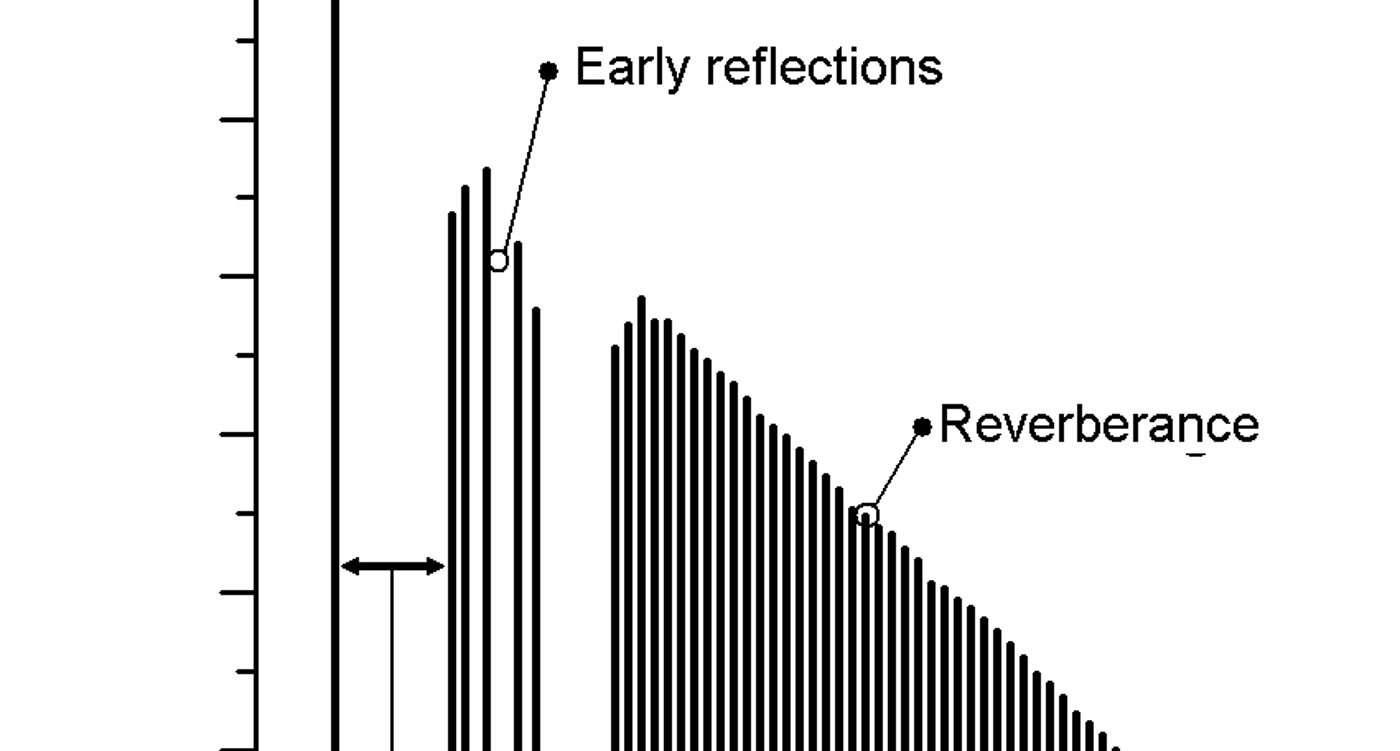Initial Time Delay Gap (ITDG)
When sound from a sound source propagates in a room, it moves in all directions. A listener (or a recording microphone) first receives the direct sound as it has the shortest path. The next arrival is the early reflections from the boundaries. Finally, the sound reflected multiple times - the reverberant sound field - is received. The Initial Time Delay Gap is defined by the time between the arrival of the direct sound and the early reflections.
The ITDG can provide information on the size of the room. A larger gap means a bigger room.
In recording acoustic, classical music, where supporting microphones are added to the main stereo (or any other format) set of microphones, it is common practice to add the supporting microphones' signal around the first reflections. This praxis leaves the directionality of the direct signal undisturbed.
